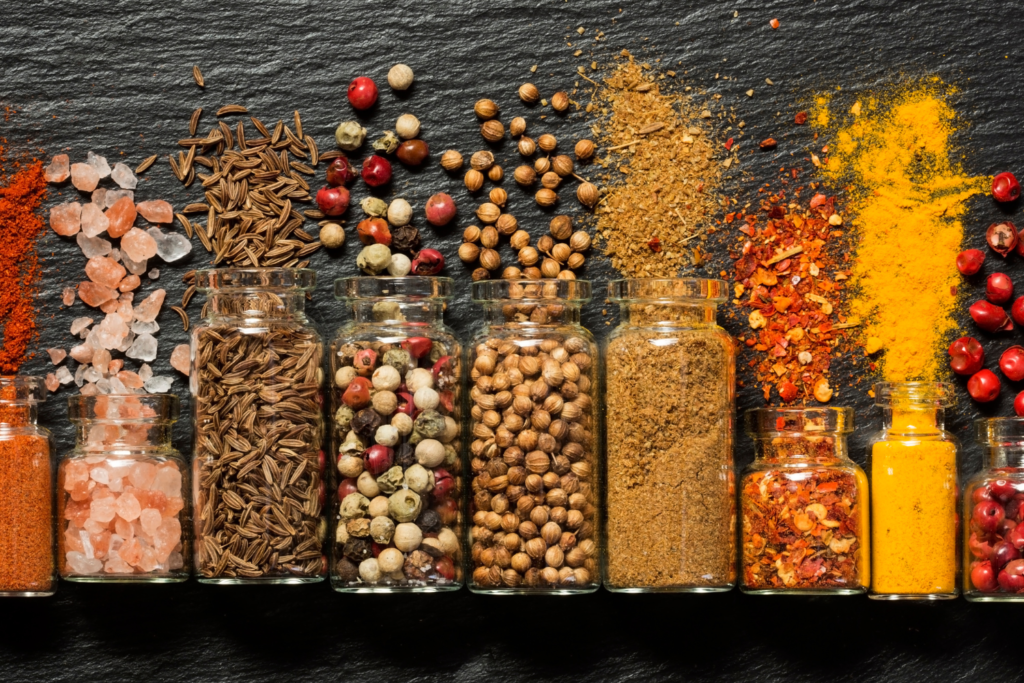Food of the Month – Spices

The ancient trade in spices, incense, and silk paved the way for our global economy. In fact, ongoing European contact with the people of the Western Hemisphere happened because Christopher Columbus was looking for a shortcut to India when he arrived in the Caribbean. Spices, along with other exotic agricultural products and precious metals, drove the European colonial conquests. In their indigenous growing regions, spices were an important part of the local diets, but until recently in the western world, they were a sign of high social status.
Storage Tips: Purchase spices in small quantities and use quickly as their volatile oils degrade rapidly. Replenish your supply of fresh spices at least once per year. To make spices last longer, purchase whole and grind immediately before use with a mortar and pestle; this works especially well with cumin and coriander. Some spices, including peppercorns, cinnamon, clove, coriander, cumin, fennel seeds, juniper berries, mustard seeds, and star anise, can be toasted to improve or expand their flavors.
FYI: According to the Institute for Global Food Security, some spice companies, trying to maximize profits, adulterate their products with up to 30% non-edible bulking agents.
Nutrition: Technically speaking, spices are the highly fragrant bark, bud, fruit, root, seed, or stem part of plants used to flavor food. They do not contain significant micro– or macronutrients, but they are rich sources of bioactive compounds that benefit health, in addition to making food taste better.
Curry Powder: can be any mix of spices; they are commonly used where many spices originated, SE Asia and India.
Saffron: The most expensive spice by weight, each saffron crocus flower produces 3-4 stigma which are the edible portion.
Cinnamon: It is the inner bark of a tree and adds a sweet flavor to foods; research indicates compounds in cinnamon may support heart health and help regulate blood sugar.
Fennel Seed: In some cultures, these are chewed post-meal to aid digestion by reducing occasional gas and bloating.
Click here for an easy and flavorful curry-spiced roasted red potato recipe!
